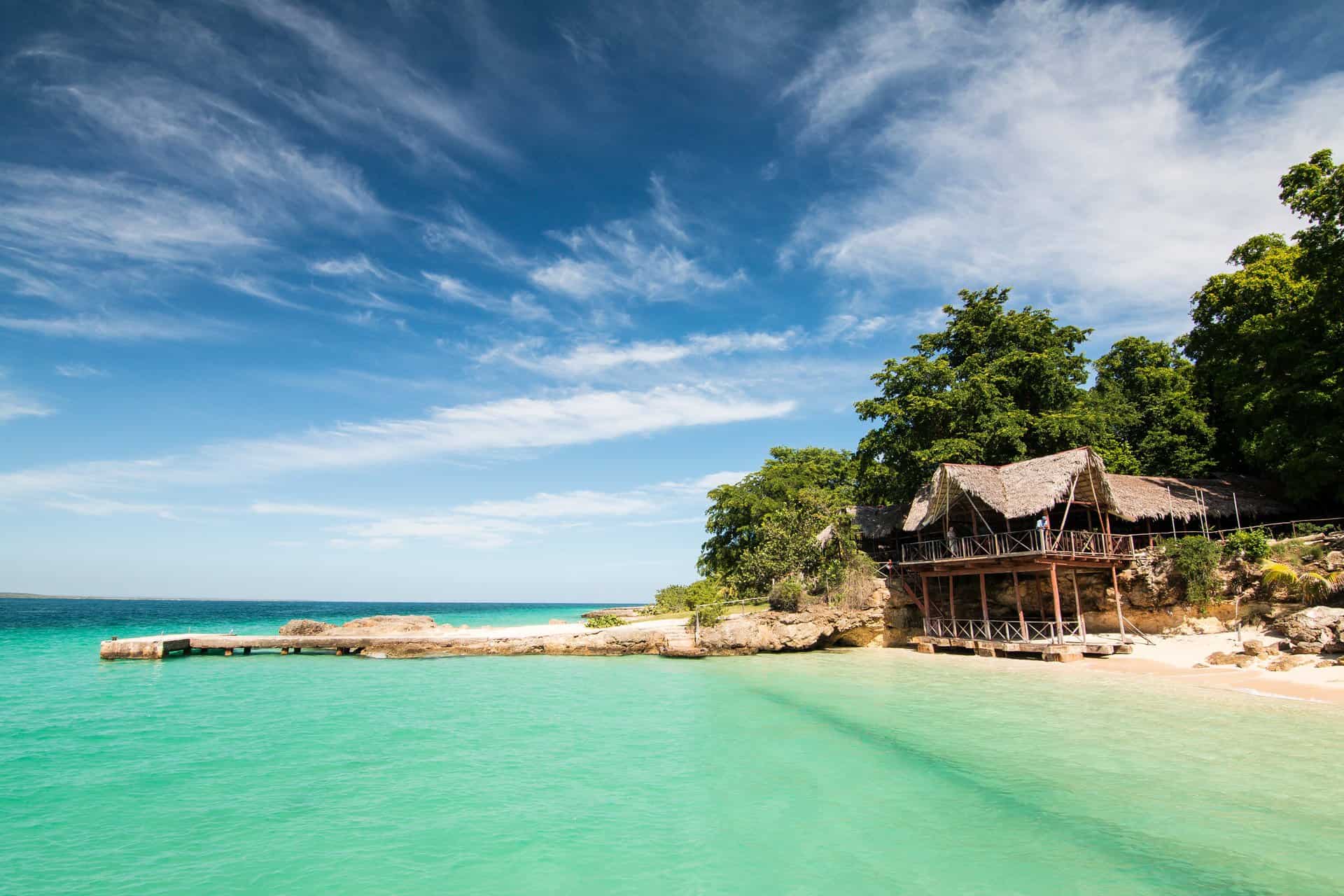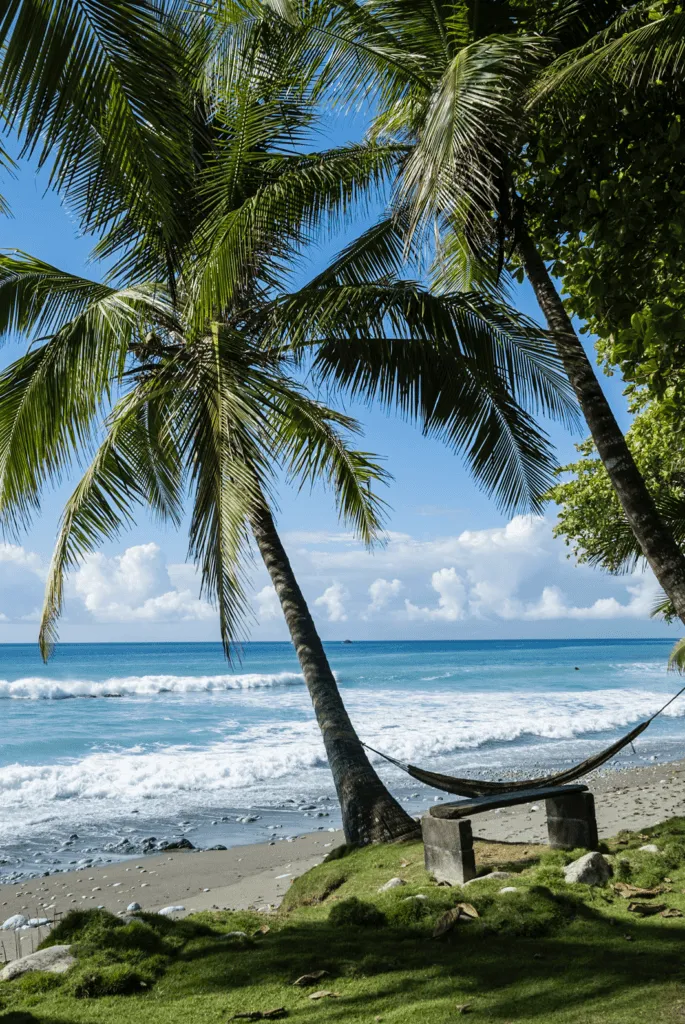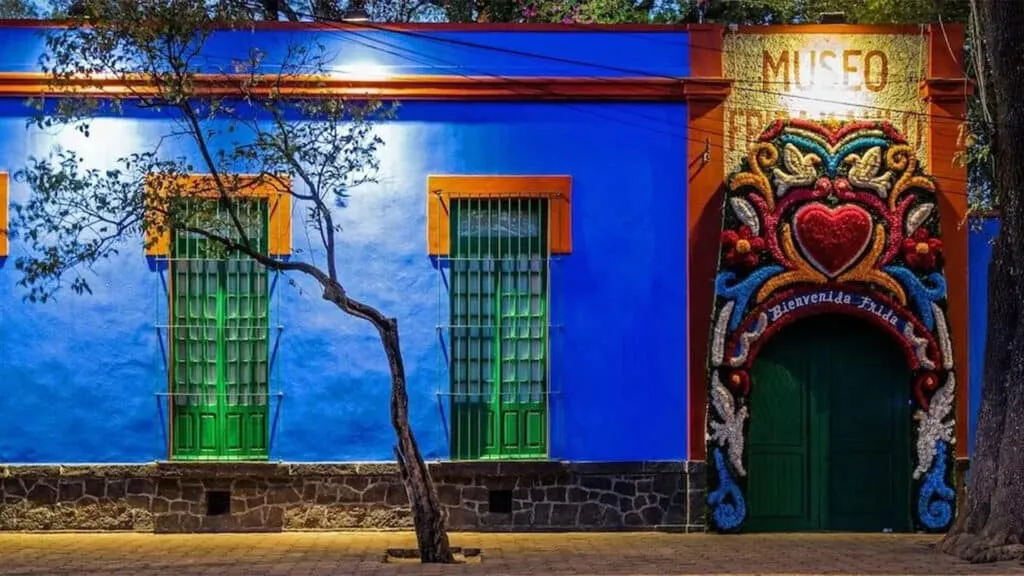
Following her trip in May, our very own Hattie Mills shares all her tips and tricks for the perfect Mexican getaway…
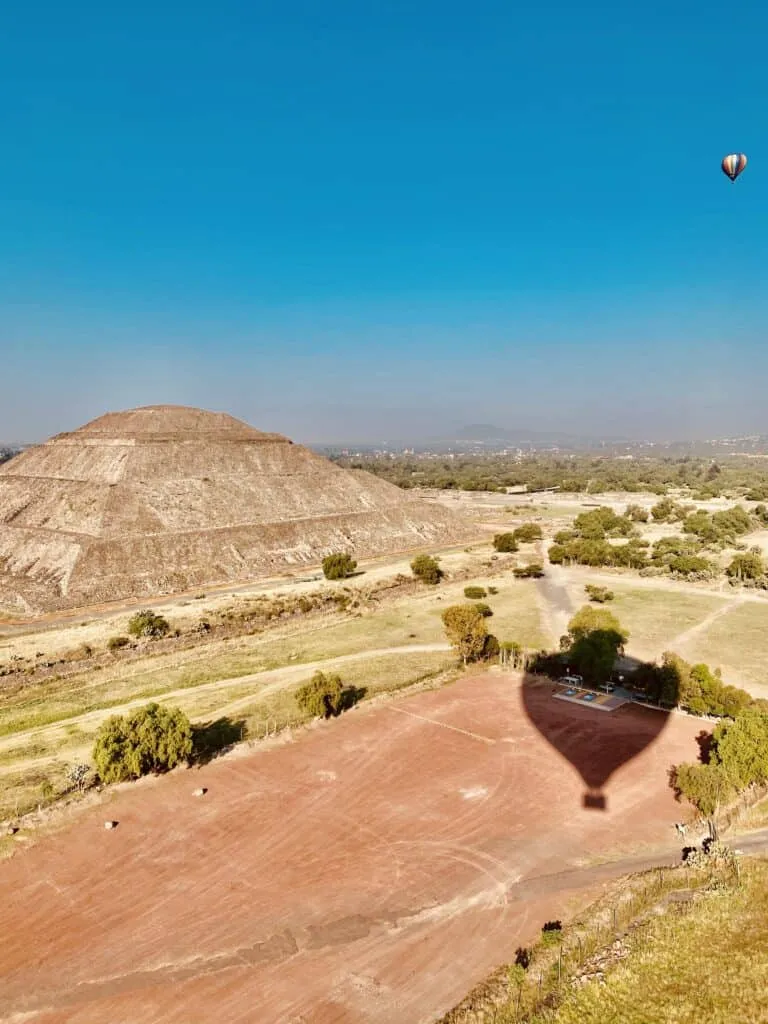
MEXICO CITY
Floating down the ancient canal on a painted wooden boat at dawn, then stepping onto a floating island for breakfast was unexpected from my second morning in Mexico City. While I sat eating freshly toasted, black corn tortillas topped with chicharron and other ingredients picked from the kitchen garden that morning, I couldn’t help but think about how this contrasted with previous days that had been filled with the noise, bustle, and energy you might expect from a capital city. And oh, what a capital it is.
An absolute highlight of any trip to Mexico is Mexico City itself. From the aforementioned floating chinampas islands to the historical city centre and the diverging neighbourhoods – earthy and local Coyoacan, sophisticated Polanco, and buzzy Roma – there’s enough to keep you busy here for days, if not weeks.
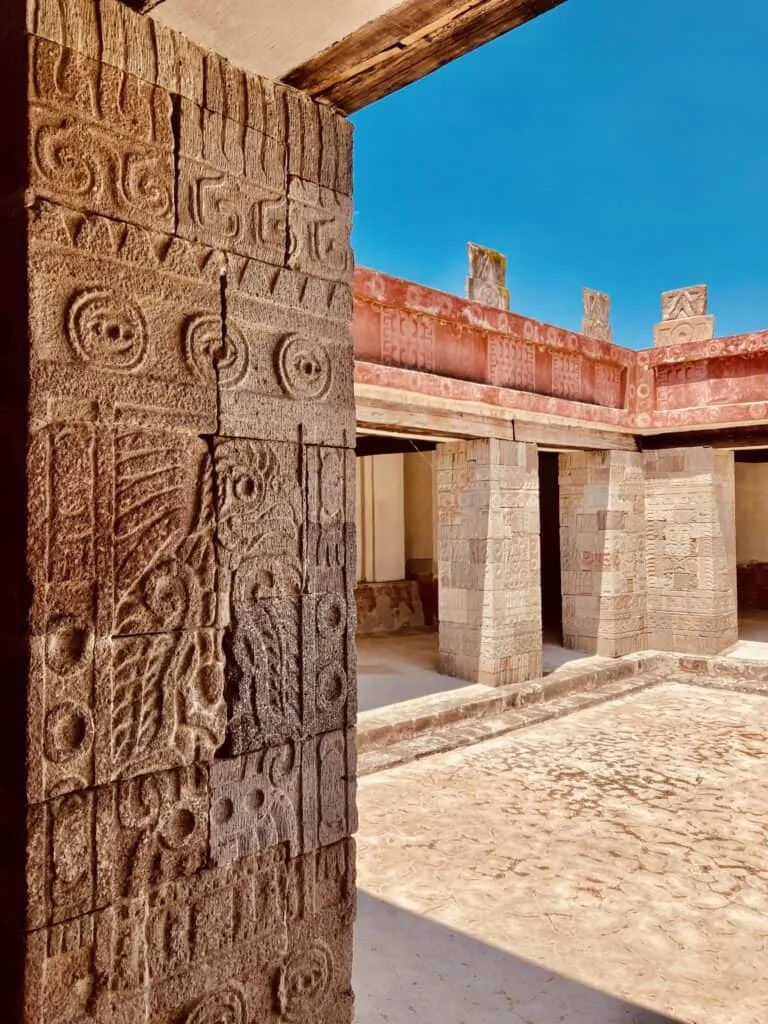
MUST SEES
The Anthropology Museum is an essential first stop to get a solid grounding in the scale of culture and history this country has to offer—made even better if it’s “Off-Hours” and you have the place to yourself as I did. Next up, a visit to Frida Kahlo’s Blue House for an insight into her life of dedication to art and Diego Rivera. Pre-booking is essential, but bear in mind, the museum houses many artifacts and photographs but not so much artwork. For that, you must visit other galleries in the city, such as Museo Dolores Olmedo, a private art collection with around 25 of her paintings, and the Museo de Arte Moderno, which is home to the most famous of Kahlo’s work, The Two Fridas.
A short stroll away is Coyoacan neighbourhood, where you’ll find many Chilangos (Mexico City’s residents) and some charming undercover markets. My time here was topped off by an early morning hot air balloon flight over the ancient Teotihuacan ruins, where I was suspended above the Sun and Moon Pyramids while enjoying a cold glass of fizz.
WHERE TO STAY
Casa Polanco was my home away from home, and it felt rather like staying at a wealthy uncle’s house. Beautiful neo-colonial architecture, marble floors, and a gorgeous eucalyptus scent in the air. Rooms were airy and spacious, and with only 19 of them, it felt like a very exclusive bolthole in the middle of the city.
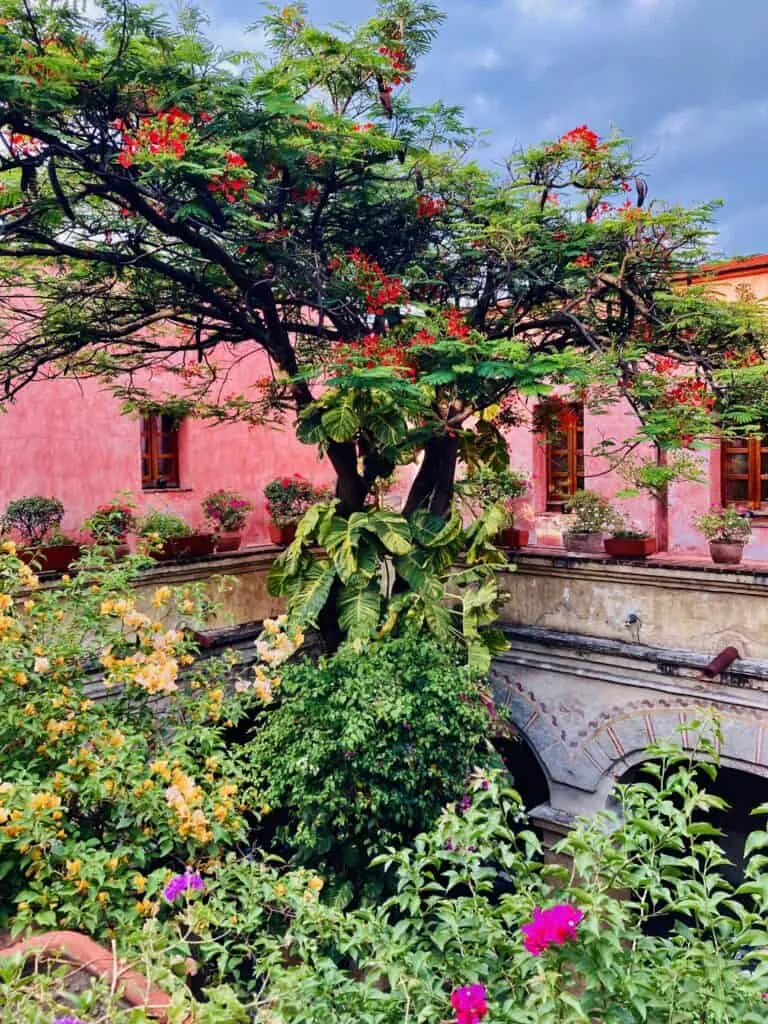
OAXACA
Oaxaca is culturally and gastronomically rich. Vibrant textiles and handicrafts come from the surrounding local villages and are sold in the city markets. There are a plethora of good bars and restaurants, colourful houses, colonial churches, archaeological sites, and some fantastic street art. It can feel quite touristy at times, particularly in the center, but there are a few lovely local neighbourhoods just a short walk away for those curious to see other sides of the city.
East of the grid is Jalatlaco, a barrio mágico (magical neighbourhood) where you could find all the butcher shops when the Spanish were in power. Now a local neighbourhood, it has charming cobbled streets, colourful murals and papel picado, the traditional Mexican bunting, hanging between the houses. There are a handful of cafes and restos but very few tourists. There’s also Xocimilco, the linen and weavers neighbourhood. Here the Leiva family can make you a customised bedspread. Straddling an old aqueduct, this barrio mágico is 10-12 blocks long and teeming with locals.
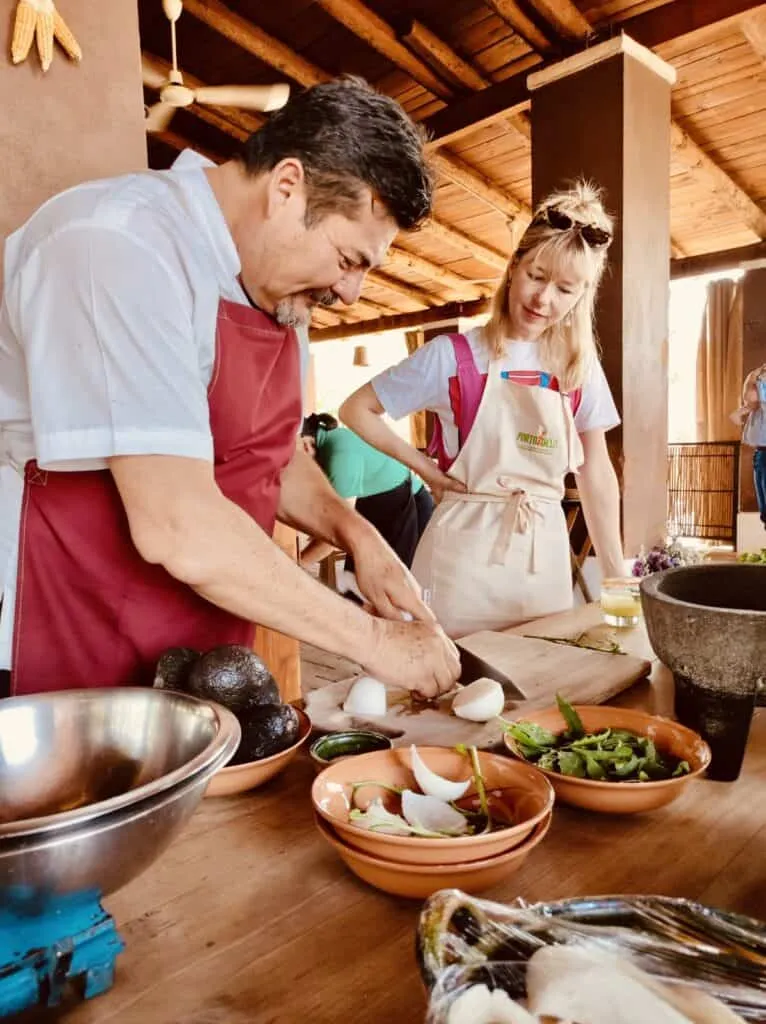
WHAT TO DO
One of my favourite experiences in Oaxaca was visiting the market and partaking in a cooking class with Alejandro Ruiz, a world-renowned chef who heads up Casa Oaxaca and consults for restaurants around the world. A warm, charismatic man, he is passionate and knowledgeable about Oaxacan cuisine. I went with him on market day to the Central de Abasto and saw only locals and children accompanying their parents and grandparents with not another gringo in sight.
The market sells fruit, veg, meat, herbs, nuts, salty crickets, clothes, household utensils, leather shoes, saddles and more. My best buy here was my treasured sal de gusano (worm salt), a great addition to any mezcal or tequila-based cocktail.
After buying our ingredients, we travelled to Ruiz’s farm to prepare our meal in the community-run kitchen. Cooking on old wood-burning stoves, we ate delicious memelas (mini tortillas with salty cheese) followed by a three-course lunch which I helped to prepare. Ruiz’s project is designed to educate local children, bestowing them with useful kitchen skills while raising money to build a community church. The meal we prepared was some of the best food I had on my trip—fresh, colourful, local and made with a lot of heart.
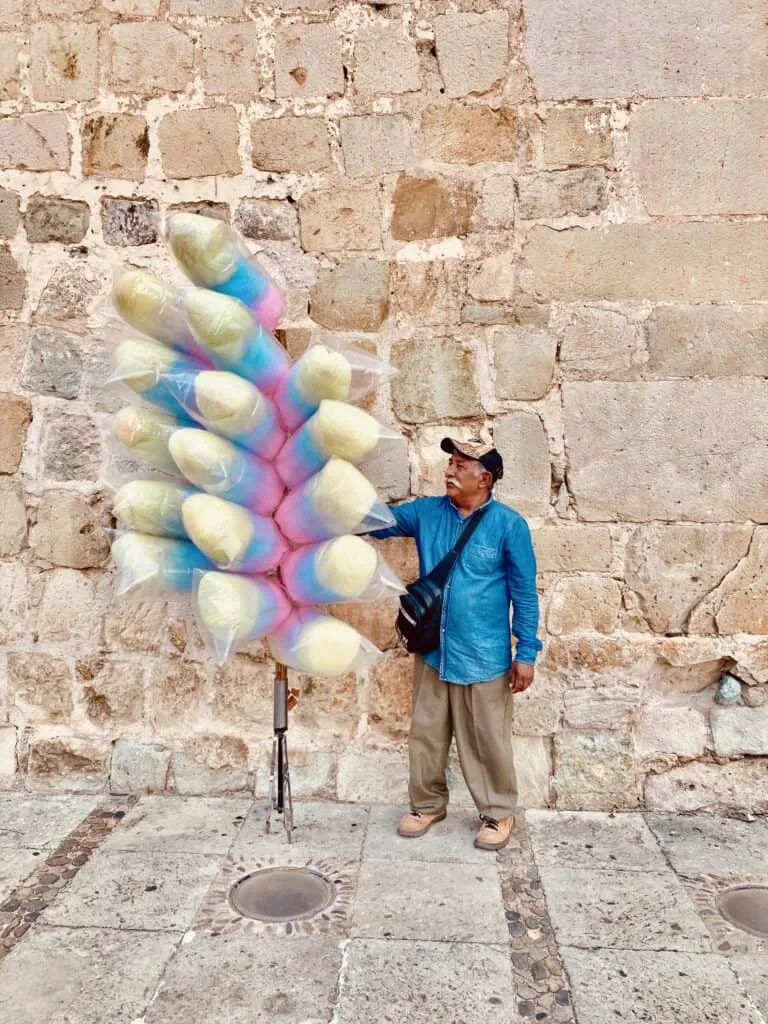
WHERE TO STAY
Escondido Oaxaca is the place for any design-conscious travelers looking for a small, stylish base in the city. Rooms are austere but warm, and there’s a great rooftop bar and pool.
For anyone after somewhere more historical, there’s the converted 16th-century convent, Quinta Real Oaxaca. It has abundant bougainvillea, a gorgeous pool, and a particularly atmospheric courtyard restaurant.
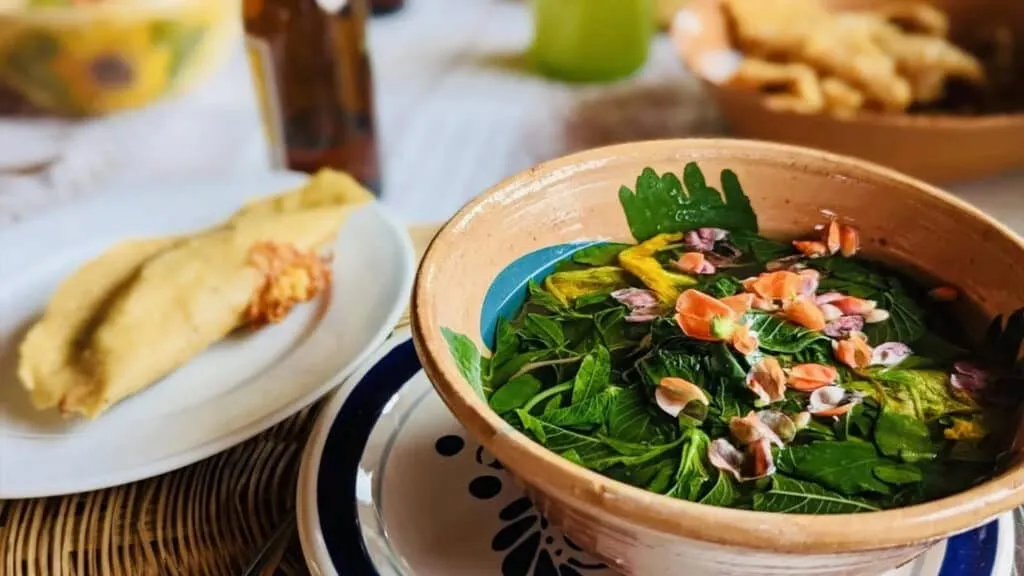
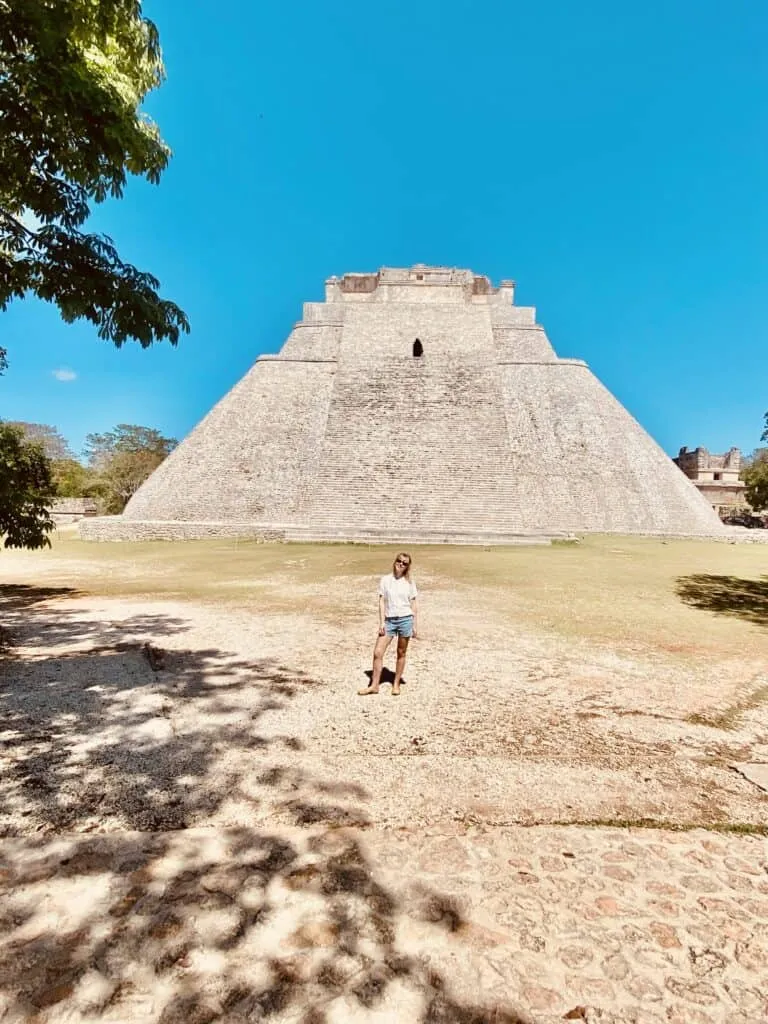
YUCATAN PENINSULA
Stepping off the plane in the Yucatan, the heavy humid air hits you first. The land of mangroves, 8,000 cenotes, and living, breathing Mayan culture sprawled along the Emerald Coast, the Yucatan is located in the northwest corner of Mexico and is a heady place to explore. First stop was Uxmal (ush-mal), an ancient Mayan archaeological site just one hour’s drive from the capital, Merida. Here you’ll see ornate carvings, friezes, and sculptures embedded in astonishing architecture spread over multiple different levels. Incredibly peaceful, there were very few fellow visitors compared to the more famous Chichen Itza, a nearby site that can feel a bit like a theme park with masses of people, queues, and turnstile gates to enter.
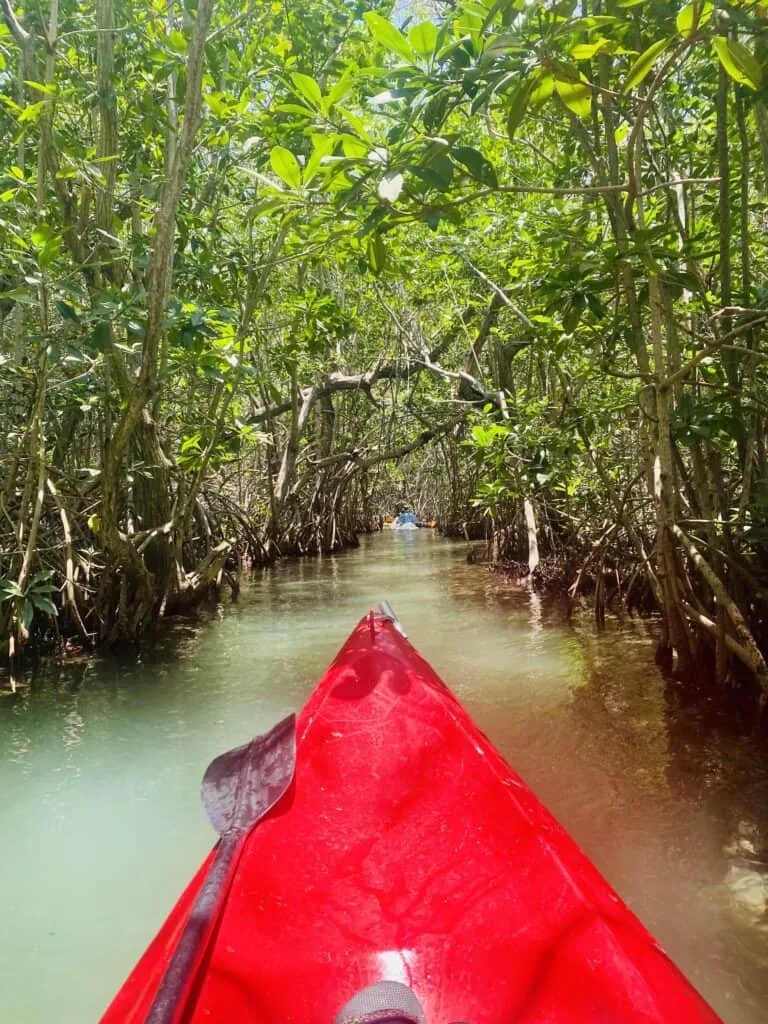
It’s a short 30-minute drive to Chuburna where we kayaked in the mangroves of the Emerald Coast. This is where some of the best birdwatching in the Americas can be found, with approximately 345 different species living here, including flamingo. November to March is the best time to visit for wildlife spotting and optimal weather.
Colourful fishing boats bobbed around us in the marina as we set off towards the shallow waters of the mangroves, which form natural shields against flooding and the occasional hurricane. Once at the beach, we got in our kayaks and paddled along the coastal waterways where we then maneuvered our way through the mangroves until reaching a freshwater cenote for a refreshing dip and then lunch back at the beach.
Chablé Yucatan is an old hacienda estate just a 40-minute drive from Merida, set in the middle of the Yucatan jungle. Each casita comes with a bike to zip around the hotel on, and en route you’ll see birds galore, small deer, and iguana. The spa is world-class (and has its very own cenote). There’s also a renowned onsite restaurant, Ixi’im, which serves a fusion of Mayan and Mexican food.
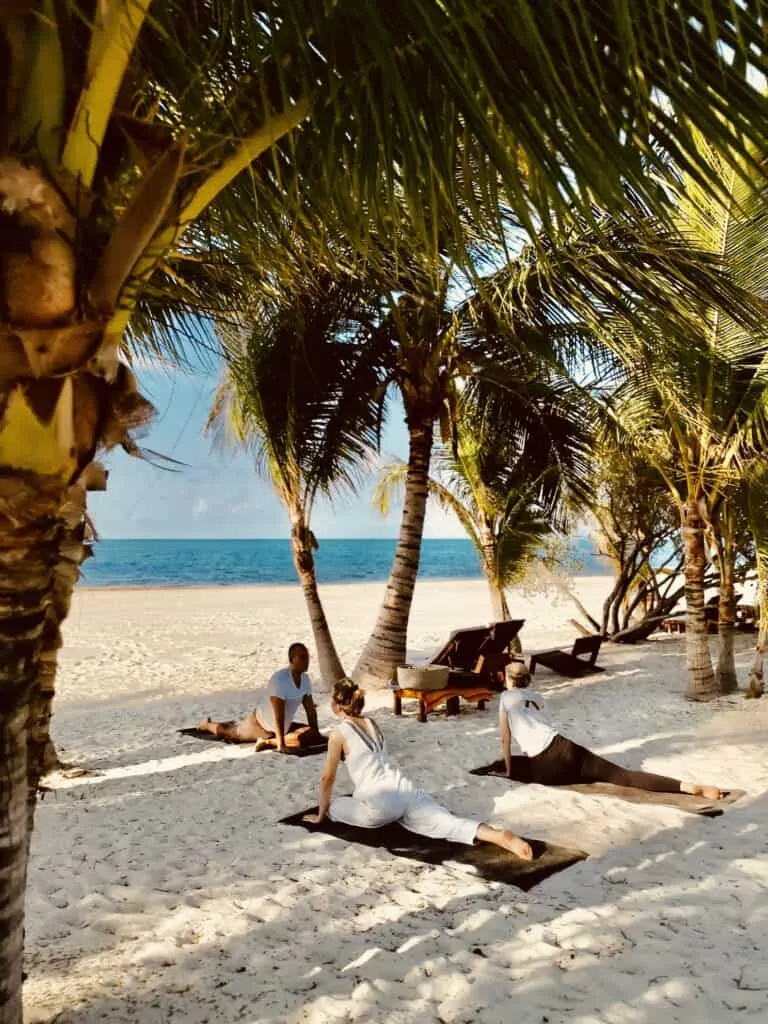
RIVIERA MAYA
The beach areas of Cancun, Playa del Carmen, and Tulum were manufactured in the 1970s to attract more tourism to Mexico. One road connects these resorts, and it can get very busy. Most of the hotels are in gated communities, which you pull off the main road to enter, going through concierge checkpoints on the way, but once you’re in, the world and all your troubles are left behind.
The Riviera Maya is the perfect place to end a trip with some well-deserved R&R on the white-sand beaches before heading home on a direct flight from Cancun to London or various airports in the US.
Sargassum seaweed proliferates in the spring-summer season, so if you’re not keen on beach debris, make sure to ask your hotel how they tackle it.
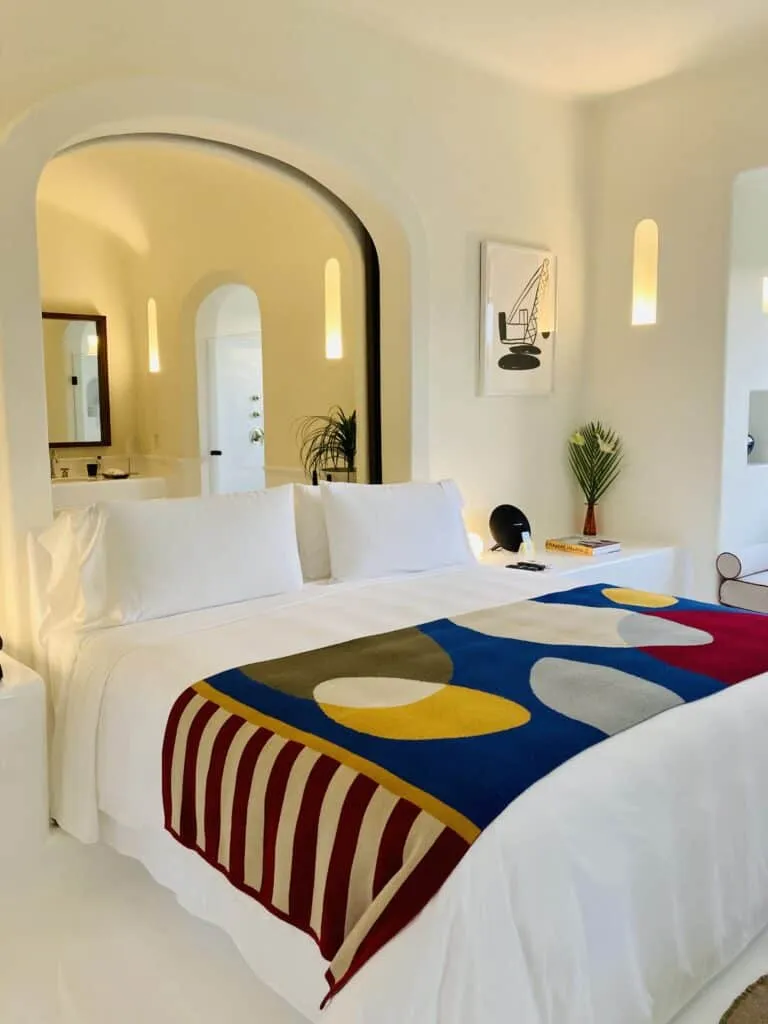
WHERE TO STAY
There are a lot of big players here like Auberge, Rosewood, and Belmond, but at PSA, we prefer the smaller guys. Chablé Maroma is a personal favourite, easily traversed by foot and Mexican-owned with a gorgeous spa and two restaurants on-site.
The early morning yoga class on the beach was a highlight of my stay.
There’s also chic Hotel Esencia, reached down a small dirt road, hiding a sophisticated sanctuary in the middle of the mangrove forest, frequented by A-listers and anyone in the know. The new speakeasy bar here with hand-painted murals was gorgeous and atmospheric.
Note:
When I got home, I was asked a lot about safety in Mexico. A few negative news stories have put-off visitors, but as a solo female traveller, I felt very at ease throughout the trip. Merida is lauded as one of the safest cities in Mexico, I was out late in laid-back Oaxaca and Mexico City felt like many other capitals where you just need to have your wits about you.
Related Stories

The Art of Travel Photography with Michael Turek
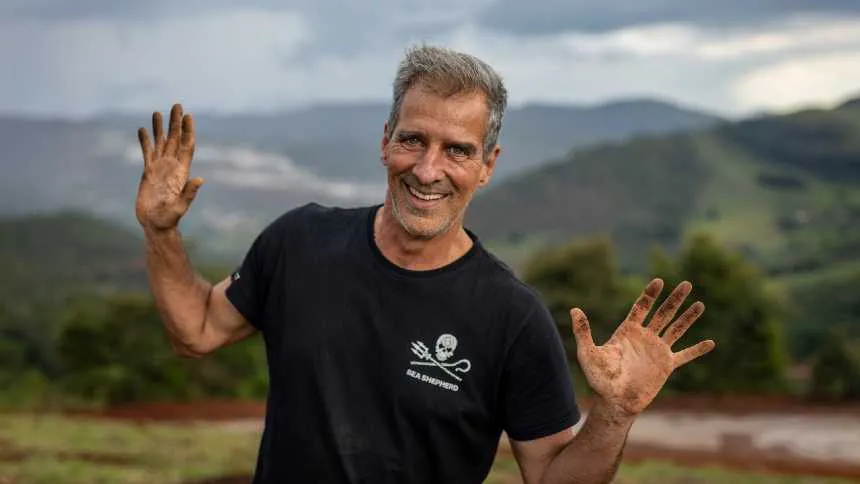
Nature, Freedom and a 2000-Year Plan: Meet the Man Behind Brazil’s Ibiti Project
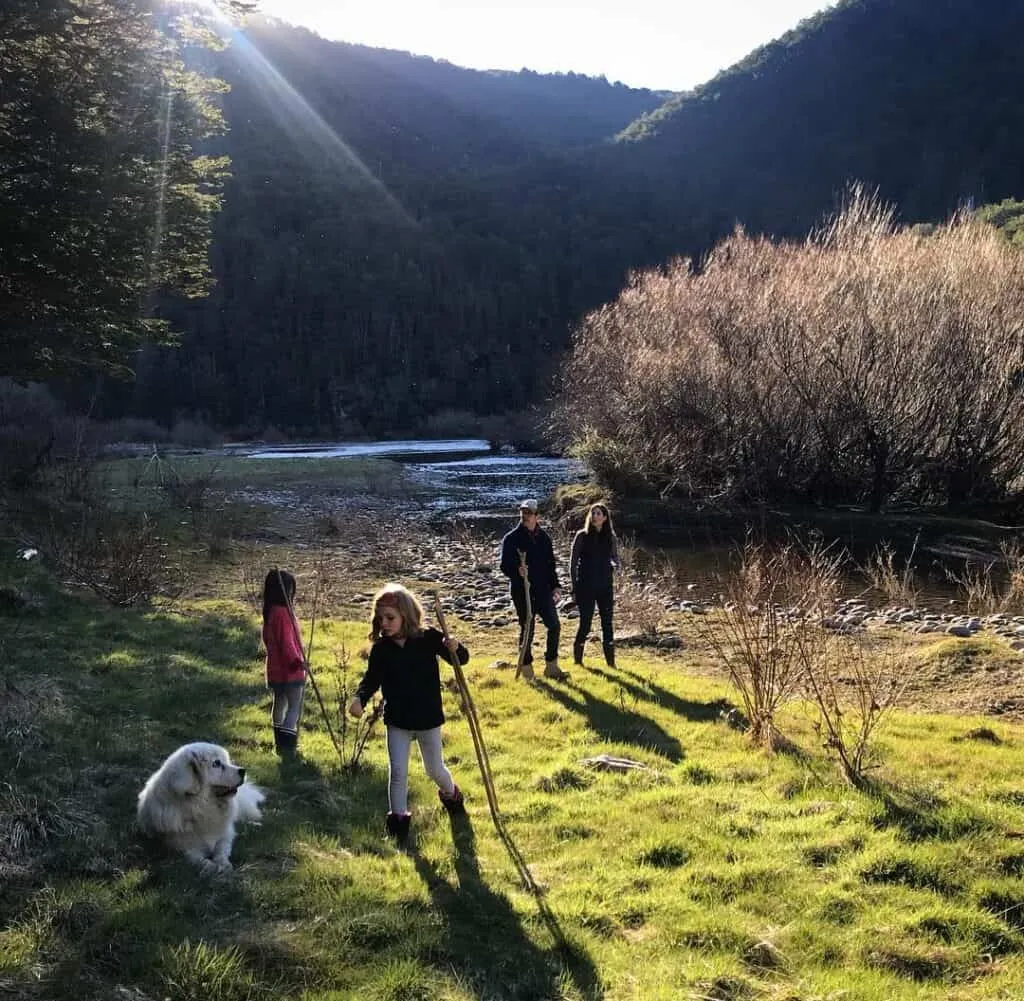
Patagonia with Kids: A Parent’s Guide
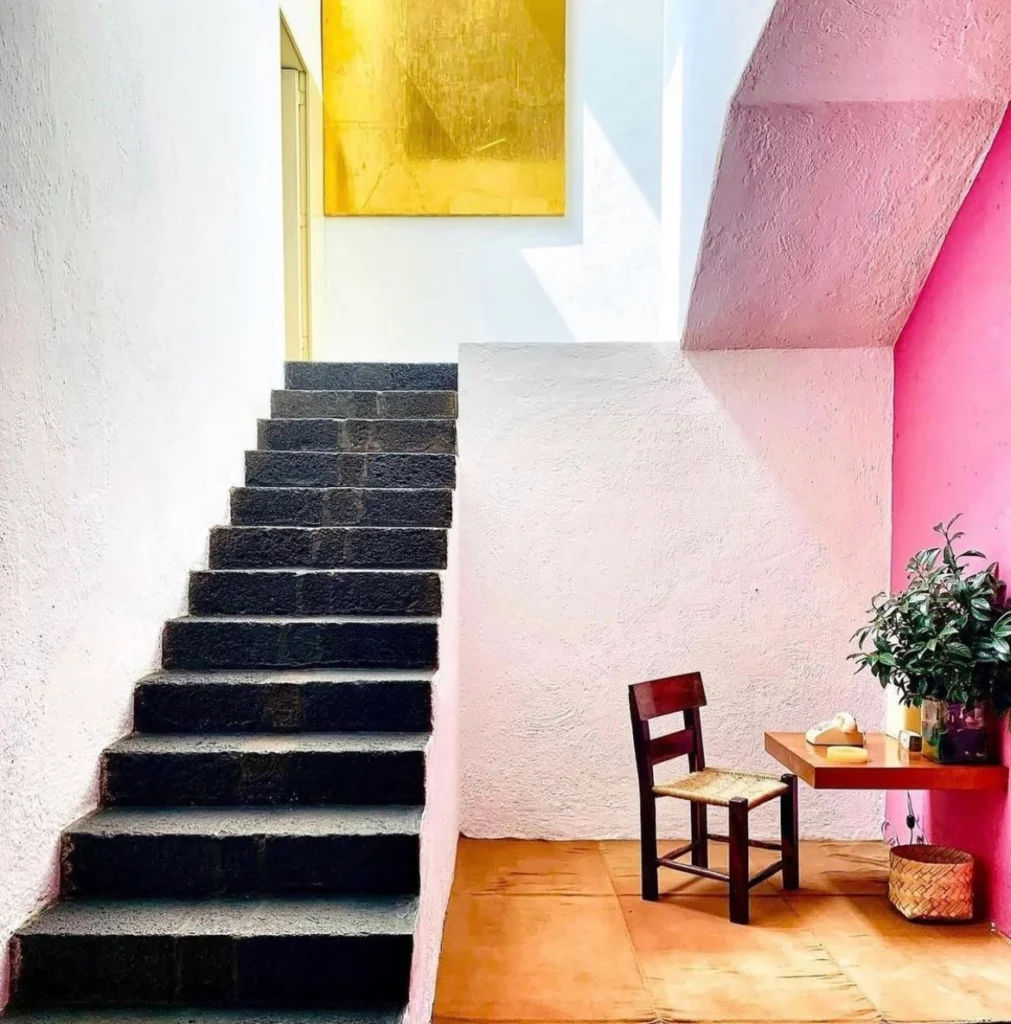
An Art-Lover’s Guide to Mexico City
@plansouthamerica
